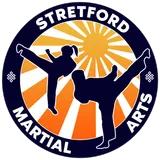Introduction to Karate
Karate is more than a martial art; it’s a way of life that has captivated practitioners for centuries. Its blend of discipline, philosophy, and physical prowess has inspired millions, transcending cultural and geographic boundaries. Whether for self-defence, fitness, or personal growth, karate remains as relevant today as it was when it first emerged.
The Origins of Karate
Karate originated on the island of Okinawa, a cultural crossroads where indigenous fighting techniques blended with Chinese martial arts. This fusion birthed a unique practice centered on unarmed combat, precision, and efficiency. Over time, karate evolved into a disciplined art form, deeply rooted in respect and tradition.
The Philosophy Behind Karate
Karate is more than physical movements; it is a philosophy that emphasizes respect, humility, and perseverance. Practitioners, or karateka, are taught to seek self-mastery, embodying the principle of “karate ni sente nashi,” meaning “there is no first attack in karate.” It’s a reminder that karate is as much about self-restraint as it is about skill.
Techniques in Karate
At its core, karate focuses on effective striking and defence. Punches and kicks are executed with precision, while open-hand strikes add versatility. Defensive techniques, such as blocks and parries, showcase karate’s strategic nature, allowing practitioners to neutralize threats without unnecessary force.
Karate Styles and Their Unique Features
Karate has branched into various styles, each with its own characteristics:
- Shotokan Karate: Known for its long, deep stances and linear movements.
- Goju-Ryu Karate: Combines hard striking techniques with soft, circular movements.
- Kyokushin Karate: A full-contact style emphasizing endurance and power.
Health Benefits of Practicing Karate
Karate offers a full-body workout that enhances strength, flexibility, and cardiovascular health. Beyond the physical, it sharpens the mind, improving focus and reducing stress. The meditative aspect of kata (forms) fosters emotional balance, making karate a truly holistic practice.
Karate for Self-Defence
Karate equips practitioners with practical skills to defend themselves. Techniques are designed to disable opponents quickly and effectively. More importantly, karate fosters situational awareness and confidence, crucial elements in avoiding or de-escalating conflicts.
Getting Started with Karate
Starting karate begins with finding the right dojo. Look for one that values respect and offers skilled instructors. Beginners will need a gi (uniform) and protective gear like gloves and shin guards to practice safely and effectively.
Karate Training Methods
Training in karate revolves around three pillars:
- Kata: These prearranged forms teach the flow of techniques.
- Sparring: Allows practitioners to apply their skills in controlled environments.
- Conditioning: Builds the physical strength necessary for powerful strikes and effective defense.
The Role of Belt Ranking in Karate
The belt system in karate symbolizes a practitioner’s journey, from the basics at white belt to mastery at black belt. Each rank represents growth, not just in skill but also in character and understanding of karate’s philosophy.
Karate Competitions and Tournaments
Competitive karate is a platform where skill and sportsmanship shine. Events are governed by rules to ensure safety and fairness, and participants are judged on technique, precision, and discipline. Tournaments are less about victory and more about showcasing the spirit of karate.
Karate for All Ages
Karate is a practice for everyone:
- Kids: Develop discipline, respect, and confidence.
- Adults: Achieve fitness and mental clarity.
- Seniors: Stay active and maintain mobility through low-impact movements.
Cultural Significance of Karate
Karate is deeply woven into Japanese culture, symbolizing resilience and respect. Its influence has spread globally, appearing in movies, TV shows, and even the Olympics, where it continues to inspire audiences worldwide.
Common Misconceptions About Karate
Karate is often misunderstood. It’s not merely about fighting or breaking boards—it’s a discipline focused on self-improvement and control. Its true essence lies in balance, not brute force.
The Future of Karate
As the world evolves, so does karate. Innovations in training methods and the sport’s inclusion in global events like the Olympics ensure its continued growth. However, at its heart, karate remains a timeless tradition, preserving its core values for future generations.
Karate is a journey, one of strength, focus, and respect. Whether stepping onto the dojo floor for the first time or honing your skills as a seasoned practitioner, karate offers a path of endless discovery and growth.

